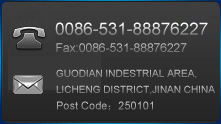One of the three rules of fishkeeping is to not overfeed the fish. All uneaten food in a tank quickly pollutes the water. Overfeeding kills the fish with kindness. The best guideline is to feed only enough food each time for the to fish finish it within five minutes.
Most fish will do well on a diet consisting primarily of dry flake food. Use only brand-name, high-quality food. There is a wide variety of flake foods, and it is best to purchase several kinds and feed a different one each time. This helps ensure a more balanced diet for the fish.
Larger fish and many catfish will do better on pellet foods, which have more bulk. Freeze-dried foods are particularly good for fish that need a lot of protein. By occasionally offering fresh-frozen or live foods, you will ensure that your fish are getting a nutritionally complete diet.
When shopping for food, remember that commercial foods have a limited shelf life. If the containers are dusty or look like they have been on the shelf a long time, go somewhere else.
Purchase small containers. Yes, it is more economical to buy larger sizes, but once the containers are opened, the nutritional value of the food will begin to deteriorate.
Within three to six months, less than half the original nutritional value remains. For this reason, do not buy bulk-packed flake foods unless you have enough fish to consume it within a few months.
For vegetarian fish, there are flake foods that are formulated to provide much more vegetable material and less protein. Flake foods can be supplemented with freeze-dried, frozen, and even live foods, all of which are available at the aquarium store.
Many hobbyists keep small catfish in their tanks to eat excess food that falls to the bottom of the tank. These fish must receive the same quantity and quality of food as the rest of the residents.
Because they feed at the bottom of the tank, it is best to feed them just before turning off the tank lights. The catfish will feed in the dark while the other fish are resting. Heavy pellet foods sink and work especially well for this purpose.
Healthy fish can go for at least one or two weeks without eating. When you leave on vacation for a week or so, don’t worry about not feeding the fish. More fish have probably died from severe water pollution as a result of well-meaning friends or neighbors overfeeding the fish than ever suffered from not eating for a week.
Sources of fish food
•Fish meal (protein source) have two basic types: (a) those produced from fishery wastes associated with the processing of fish for human consumption (such as salmon and tuna) and (b) those from specific fish (herring, menhaden and pollack) which are harvested solely for the purpose of producing fish meal.
•Shrimp meal is made from cull shrimp that are being processed before freezing or from whole shrimp that is not of suitable quality for human consumption. The material to be made into shrimp meal is dried (sun-dried or by using a dryer) and then ground. Shrimp meal is a source of pigments that enhances the desirable color in the tissues of fish. It is also a secondary supplemental protein source for fish.
•Squid meal is made from squid viscera portions from cannery plants including the eggs and testis. Squid Meal is a highly digestible protein source for fish which provides a full range of amino acids, vitamins, minerals and cholesterol (1.0–1.5%) of cholesterol suitable for fish fry and young fish.
•Brine shrimp (adult Artemia) is a common food source for fish that are available in adult-form, as eggs or freeze-dried. Brine shrimp is a source of protein, carotene (a color enhancer) and acts as a natural laxative in fish digestive systems. Brine shrimps can also supply the fish with vegetable matter due to their consumption of algae.
•Soybean meal is a high protein source for fish and has become a substitute for traditionally-used marine animal meals.
•Spirulina is a blue-green plant plankton rich in raw protein, vitamins A, B1, B2, B6, B12, C and E, beta-carotene, color enhancing pigments, a whole range of minerals, essential fatty acids and eight amino acids required for complete nutrition.
•Whole wheat (carbohydrates) is not the best source of energy in fish but is an excellent source of roughage for fish such as Goldfish and Koi. It is also a natural source of vitamin E which promotes growth and enhances coloration.
JINAN QIDONG MACHINERY provide you fish food processing line.

